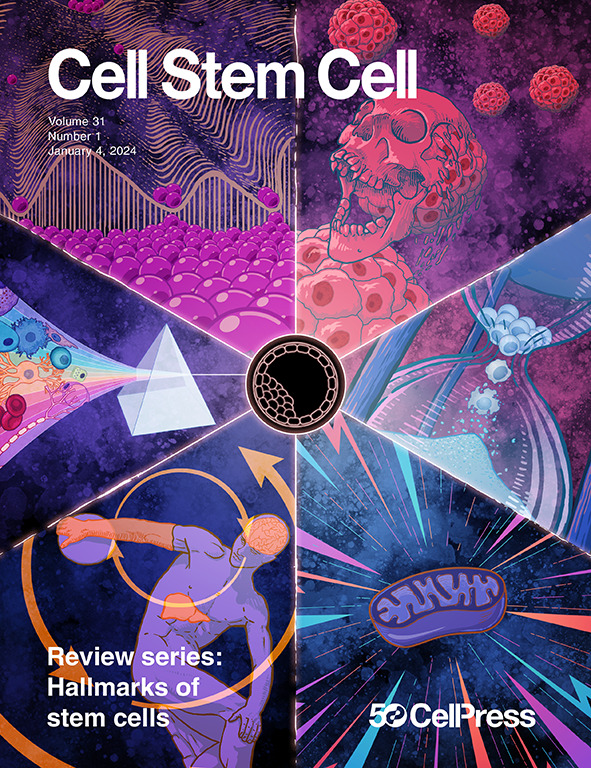Deconvoluting clonal and cellular architecture in IDH-mutant acute myeloid leukemia
IF 20.4
1区 医学
Q1 CELL & TISSUE ENGINEERING
引用次数: 0
Abstract
Isocitrate dehydrogenase 1/2 (IDH) mutations are early initiating events in acute myeloid leukemia (AML). The complex clonal architecture and cellular heterogeneity in IDH-mutant AML underlies the heterogeneous clinical presentation and outcomes. Integrating single-cell genotyping and transcriptomics, we demonstrate a stem-like and inflammatory phenotype of IDH-mutant AML and identify clone-specific programs associated with NPM1, NRAS, and SRSF2 co-mutations. Furthermore, these clones had distinct responses to treatment with combination IDH inhibitors and chemotherapy, including elimination, reconstitution of myeloid differentiation, or retention within progenitor populations. At relapse after IDH inhibitor monotherapy, we identify upregulated stemness, inflammation, mitochondrial metabolism, and anti-apoptotic factors, as well as downregulated major histocompatibility complex (MHC) class II antigen presentation. At the pre-leukemic stage, we observe upregulation of IDH2-associated pathways, including inflammation. We deliver a detailed phenotyping of IDH-mutant AML and a framework for dissecting contributions of recurrently mutated genes in AML at diagnosis and following therapy, with implications for precision medicine.

idh突变型急性髓性白血病的反卷积克隆和细胞结构
异柠檬酸脱氢酶1/2 (IDH)突变是急性髓性白血病(AML)的早期起始事件。在idh突变型AML中,复杂的克隆结构和细胞异质性导致了不同的临床表现和结果。整合单细胞基因分型和转录组学,我们证明了idh突变AML的干细胞样和炎症表型,并鉴定了与NPM1、NRAS和SRSF2共突变相关的克隆特异性程序。此外,这些克隆对IDH抑制剂和化疗的联合治疗有明显的反应,包括消除、重建骨髓分化或保留在祖细胞群体中。在IDH抑制剂单药治疗后复发时,我们发现干性、炎症、线粒体代谢和抗凋亡因子上调,以及主要组织相容性复合体(MHC) II类抗原呈递下调。在白血病前期,我们观察到idh2相关通路的上调,包括炎症。我们提供了idh突变AML的详细表型,并提供了一个框架,用于在诊断和治疗后解剖AML中反复突变基因的贡献,这对精准医学具有重要意义。
本文章由计算机程序翻译,如有差异,请以英文原文为准。
求助全文
约1分钟内获得全文
求助全文
来源期刊

Cell stem cell
生物-细胞生物学
CiteScore
37.10
自引率
2.50%
发文量
151
审稿时长
42 days
期刊介绍:
Cell Stem Cell is a comprehensive journal covering the entire spectrum of stem cell biology. It encompasses various topics, including embryonic stem cells, pluripotency, germline stem cells, tissue-specific stem cells, differentiation, epigenetics, genomics, cancer stem cells, stem cell niches, disease models, nuclear transfer technology, bioengineering, drug discovery, in vivo imaging, therapeutic applications, regenerative medicine, clinical insights, research policies, ethical considerations, and technical innovations. The journal welcomes studies from any model system providing insights into stem cell biology, with a focus on human stem cells. It publishes research reports of significant importance, along with review and analysis articles covering diverse aspects of stem cell research.
 求助内容:
求助内容: 应助结果提醒方式:
应助结果提醒方式:


